Truck Lifting Accident Detection Method Based on Improved PointNet++ for Container Terminals
Abstract
1. Introduction
- (1)
- A truck lifting accident detection system based on multi-line LiDAR is designed to overcome the limitations of traditional vision cameras and single-line LiDAR in terms of three-dimensional information acquisition and environmental lighting conditions.
- (2)
- An improved PointNet++ network model that combines an MLP and MAM is proposed, addressing the limitations of the traditional PointNet++ in extracting features from blurry boundary regions and capturing global features.
- (3)
- Building upon the improved PointNet++ network, this paper introduces a new approach for the accurate and efficient detection of truck lifting accidents by computing the shortest distance between the point clouds of the container and the truck chassis.
2. Related Work
3. Truck Lifting Accident Detection Method
3.1. Hardware System
3.2. Algorithm Design
3.2.1. Truck Lifting Accident Detection Process Framework
3.2.2. Improved PointNet++ for Point Cloud Segmentation Model
- (1)
- Multi-layer Perceptron
- (2)
- Mixed Attention Mechanism
- (a)
- Channel Attention Mechanism
- (b)
- Self-Attention Mechanism
3.2.3. Truck Lifting Accident Detection Algorithm
4. Point Cloud Segmentation Experiment Validation and Results Analysis
4.1. Container Lifting Operation Dataset
4.2. Experiment Environment Configuration
4.3. Model Evaluation Metrics
4.4. Comparison Experiments and Analysis
4.5. Ablation Experiment
4.6. Engineering Application Comparison Test
5. Conclusions
Author Contributions
Funding
Institutional Review Board Statement
Informed Consent Statement
Data Availability Statement
Conflicts of Interest
References
- Huang, Q.F.; Huang, Y.G.; Zhang, Z.W.; Zhang, Y.J.; Mi, W.J.; Mi, C. Truck-Lifting Prevention System Based on Vision Tracking for Container-Lifting Operation. J. Adv. Transp. 2021, 2021, 9612480. [Google Scholar] [CrossRef]
- Ji, Z.Y.; Zhao, K.K.; Liu, Z.X.; Hu, H.; Sun, Z.H.; Lian, S.G. A Novel Vision-Based Truck-Lifting Accident Detection Method for Truck-Lifting Prevention System in Container Terminal. IEEE Access 2024, 12, 42401–42410. [Google Scholar] [CrossRef]
- Asborno, M.I.; Burris, C.G.; Hernandez, S. Truck Body-Type Classification using Single-Beam Lidar Sensors. Transp. Res. Rec. 2019, 2673, 26–40. [Google Scholar] [CrossRef]
- Zhang, L.; Zhang, W.; Li, Y.; Li, B.; Li, C.; Sun, X. Acquisition Method of Container Lock Pin Model Based on Point Cloud Data. In Proceedings of the 2022 China Automation Congress (CAC), Xiamen, China, 25–27 November 2022; IEEE: Piscataway, NJ, USA, 2022; pp. 490–494. [Google Scholar] [CrossRef]
- Ma, Z.; Postolache, O.; Yang, Y. Obstacle Avoidance for Unmanned Vehicle based on a 2D LIDAR. In Proceedings of the 2019 International Conference on Sensing and Instrumentation in IoT Era (ISSI), Lisbon, Portugal, 29–30 August 2019; IEEE: Piscataway, NJ, USA; pp. 1–6. [Google Scholar] [CrossRef]
- Zong, C.J.; Wan, Z.B. Container Ship Cell Guide Accuracy Check Technology Based on Improved 3D Point Cloud Instance Segmentation. Brodogradnja 2022, 73, 23–35. [Google Scholar] [CrossRef]
- Mi, C.; Shen, Y.; Mi, W.J.; Huang, Y.F. Ship Identification Algorithm Based on 3D Point Cloud for Automated Ship Loaders. J. Coast. Res. 2015, 73, 28–34. [Google Scholar] [CrossRef]
- Saglam, A.; Makineci, H.B.; Baykan, Ö.; Baykan, N.A. Clustering-Based Plane Refitting of Non-planar Patches for Voxel-Based 3D Point Cloud Segmentation Using K-Means Clustering. Trait. Signal 2020, 37, 1019–1027. [Google Scholar] [CrossRef]
- Zhang, J.X.; Lin, X.G.; Ning, X.G. SVM-Based Classification of Segmented Airborne LiDAR Point Clouds in Urban Areas. Remote Sens. 2013, 5, 3749–3775. [Google Scholar] [CrossRef]
- Hinton, G.E.; Salakhutdinov, R.R. Reducing the dimensionality of data with neural networks. Science 2006, 313, 504–507. [Google Scholar] [CrossRef] [PubMed]
- Qi, C.R.; Su, H.; Mo, K.; Guibas, L.J. Pointnet: Deep learning on point sets for 3d classification and segmentation. In Proceedings of the IEEE Conference on Computer Vision and Pattern Recognition, Honolulu, HI, USA, 21–26 July 2017; IEEE: Piscataway, NJ, USA; pp. 652–660. [Google Scholar]
- Qi, C.R.; Yi, L.; Su, H.; Guibas, L.J. Pointnet++: Deep hierarchical feature learning on point sets in a metric space. In Proceedings of the 31st International Conference on Neural Information Processing Systems, Long Beach, CA, USA, 4–9 December 2017. [Google Scholar]
- Li, Y.; Bu, R.; Sun, M.; Wu, W.; Di, X.; Chen, B. Pointcnn: Convolution on x-transformed points. In Advances in Neural Information Processing Systems; Neural Information Processing Systems Foundation, Inc. (NeurIPS): La Jolla, CA, USA, 2018; Volume 31. [Google Scholar]
- Zhang, L.; Wang, H. A novel segmentation method for cervical vertebrae based on PointNet plus plus and converge segmentation. Comput. Methods Programs Biomed. 2021, 200, 105798. [Google Scholar] [CrossRef] [PubMed]
- Fan, Z.M.; Wei, J.H.; Zhang, R.Y.; Zhang, W.X. Tree Species Classification Based on PointNet plus plus and Airborne Laser Survey Point Cloud Data Enhancement. Forests 2023, 14, 1246. [Google Scholar] [CrossRef]
- Hu, H.; Zhang, G.H.; Ao, J.F.; Wang, C.L.; Kang, R.H.; Wu, Y.L. Multi-information PointNet plus plus fusion method for DEM construction from airborne LiDAR data. Geocarto Int. 2023, 38, 2153929. [Google Scholar] [CrossRef]
- Lin, Y.W.; Knudby, A.J. Global automated extraction of bathymetric photons from ICESat-2 data based on a PointNet plus plus model. Int. J. Appl. Earth Obs. Geoinf. 2023, 124, 103512. [Google Scholar] [CrossRef]
- Patel, A.K.; Park, E.S.; Lee, H.; Priya, G.G.L.; Kim, H.; Joshi, R.; Arief, M.A.A.; Kim, M.S.; Baek, I.; Cho, B.K. Deep Learning-Based Plant Organ Segmentation and Phenotyping of Sorghum Plants Using LiDAR Point Cloud. IEEE J. Sel. Top. Appl. Earth Obs. Remote Sens. 2023, 16, 8492–8507. [Google Scholar] [CrossRef]
- Jing, Z.W.; Guan, H.Y.; Zhao, P.R.; Li, D.L.; Yu, Y.T.; Zang, Y.F.; Wang, H.Y.; Li, J. Multispectral LiDAR Point Cloud Classification Using SE-PointNet plus. Remote Sens. 2021, 13, 2516. [Google Scholar] [CrossRef]
- Guo, R.C.; Xie, J.L.; Zhu, J.X.; Cheng, R.F.; Zhang, Y.; Zhang, X.H.; Gong, X.J.; Zhang, R.W.; Wang, H.; Meng, F.F. Improved 3D point cloud segmentation for accurate phenotypic analysis of cabbage plants using deep learning and clustering algorithms. Comput. Electron. Agric. 2023, 211, 108014. [Google Scholar] [CrossRef]
- Chen, R.; Yang, M.; Guan, A.; Lan, Z.; Wang, L.; Wang, Y.; Niu, Q. Cigarette Perforation Point Cloud Segmentation and Hole Depth Calculation Based on the Improved PointNet++ Network and DMCP Algorithm. IEEE Sensors J. 2024, 24, 21048–21061. [Google Scholar] [CrossRef]
- Cheng, G.; Gu, C. Enhancing Point Cloud Classification and Segmentation with Attention-Enhanced SO-PointNet++. IEEE Access 2024, 12, 195986–195995. [Google Scholar] [CrossRef]
- Yu, L.; Yu, H.; Yang, S. A Deep Neural Network Using Double Self-Attention Mechanism for ALS Point Cloud Segmentation. IEEE Access 2022, 10, 29878–29889. [Google Scholar] [CrossRef]
- Rosenblatt, F. The perceptron: A probabilistic model for information storage and organization in the brain. Psychol. Rev. 1958, 65, 386–408. [Google Scholar] [CrossRef] [PubMed]
- Hu, J.; Shen, L.; Albanie, S.; Sun, G.; Wu, E.H. Squeeze-and-Excitation Networks. IEEE Trans. Pattern Anal. Mach. Intell. 2020, 42, 2011–2023. [Google Scholar] [CrossRef] [PubMed]
- Vaswani, A. Attention is all you need. In Advances in Neural Information Processing Systems; Neural Information Processing Systems Foundation, Inc. (NeurIPS): La Jolla, CA, USA, 2017. [Google Scholar] [CrossRef]
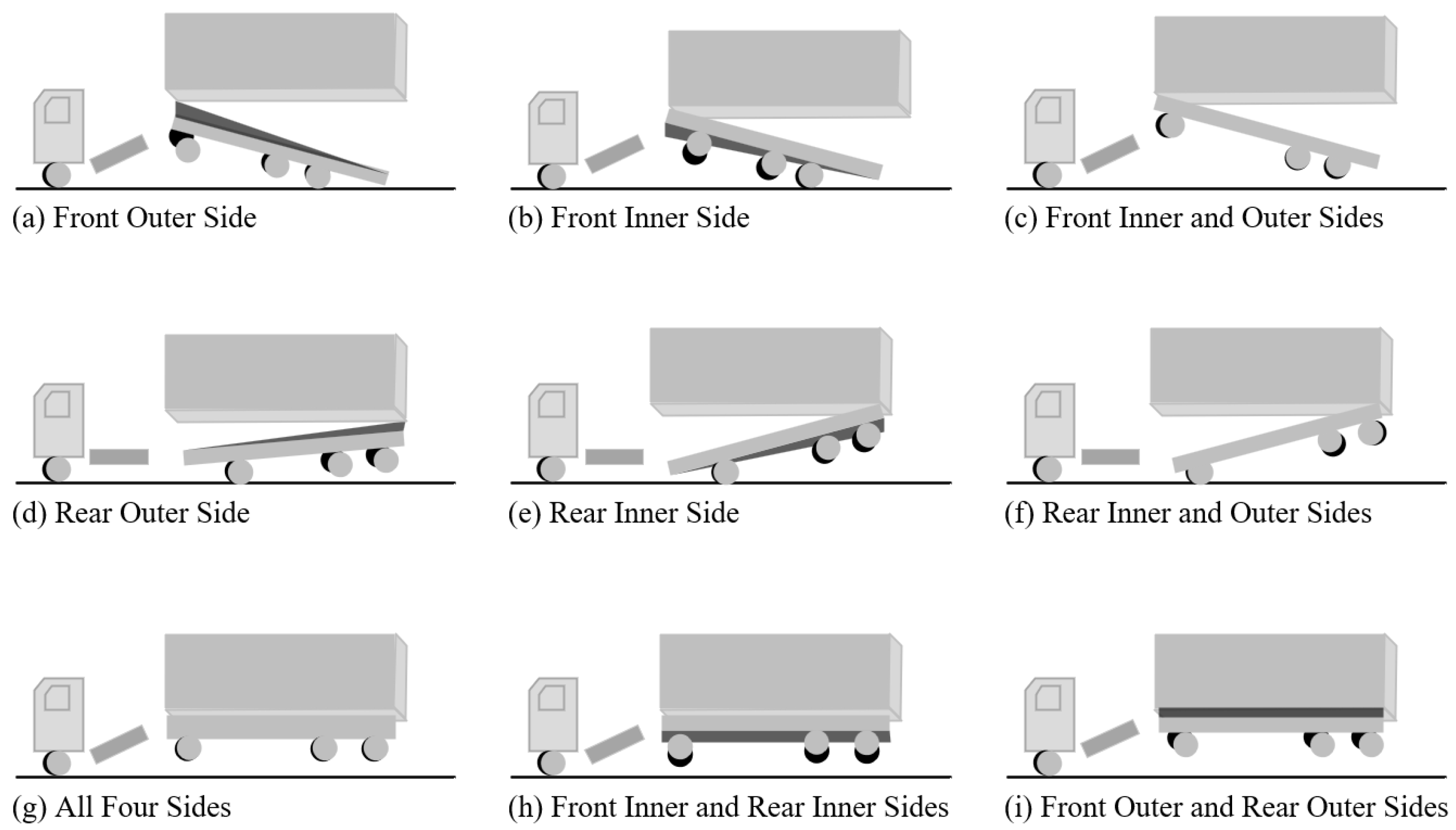
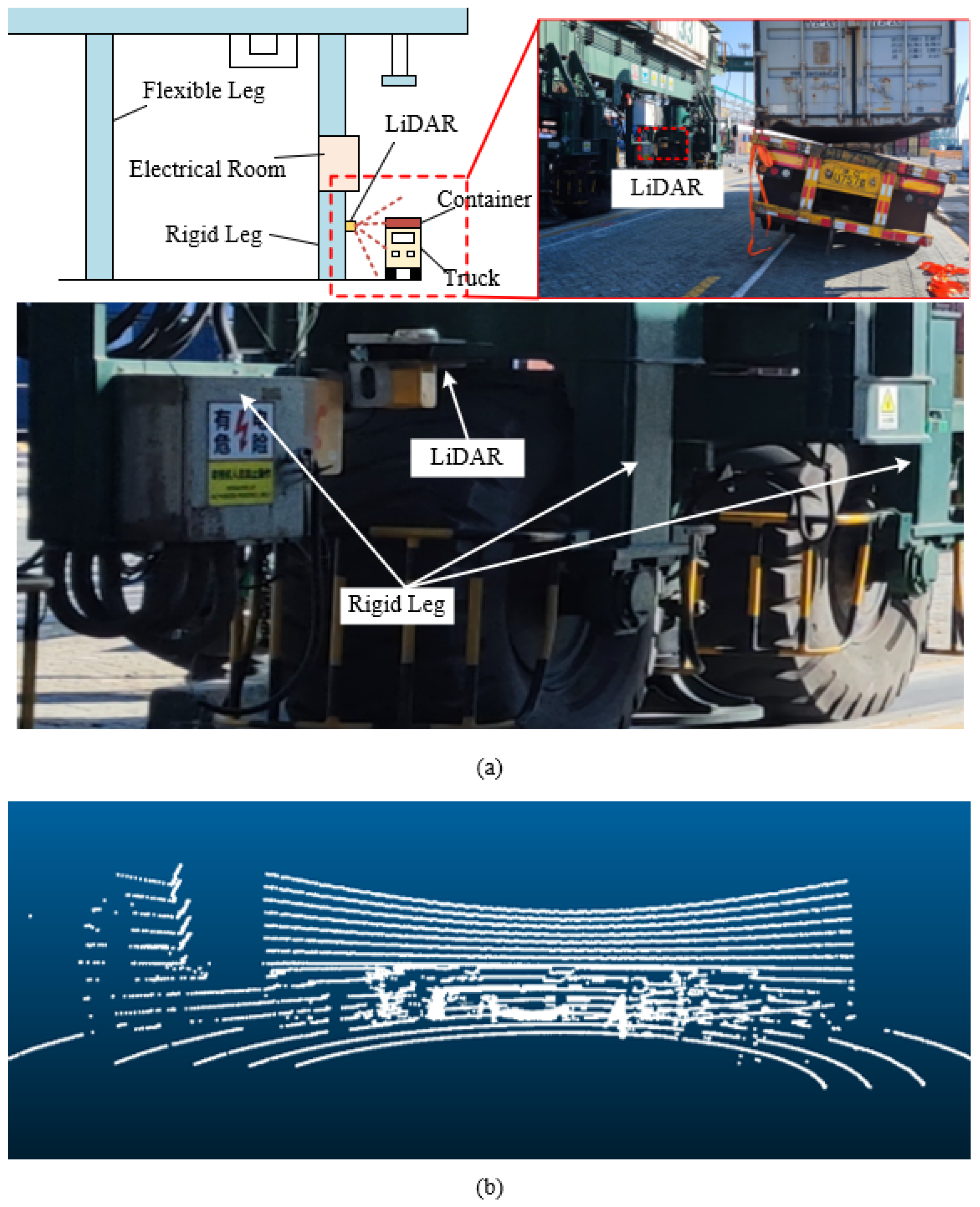

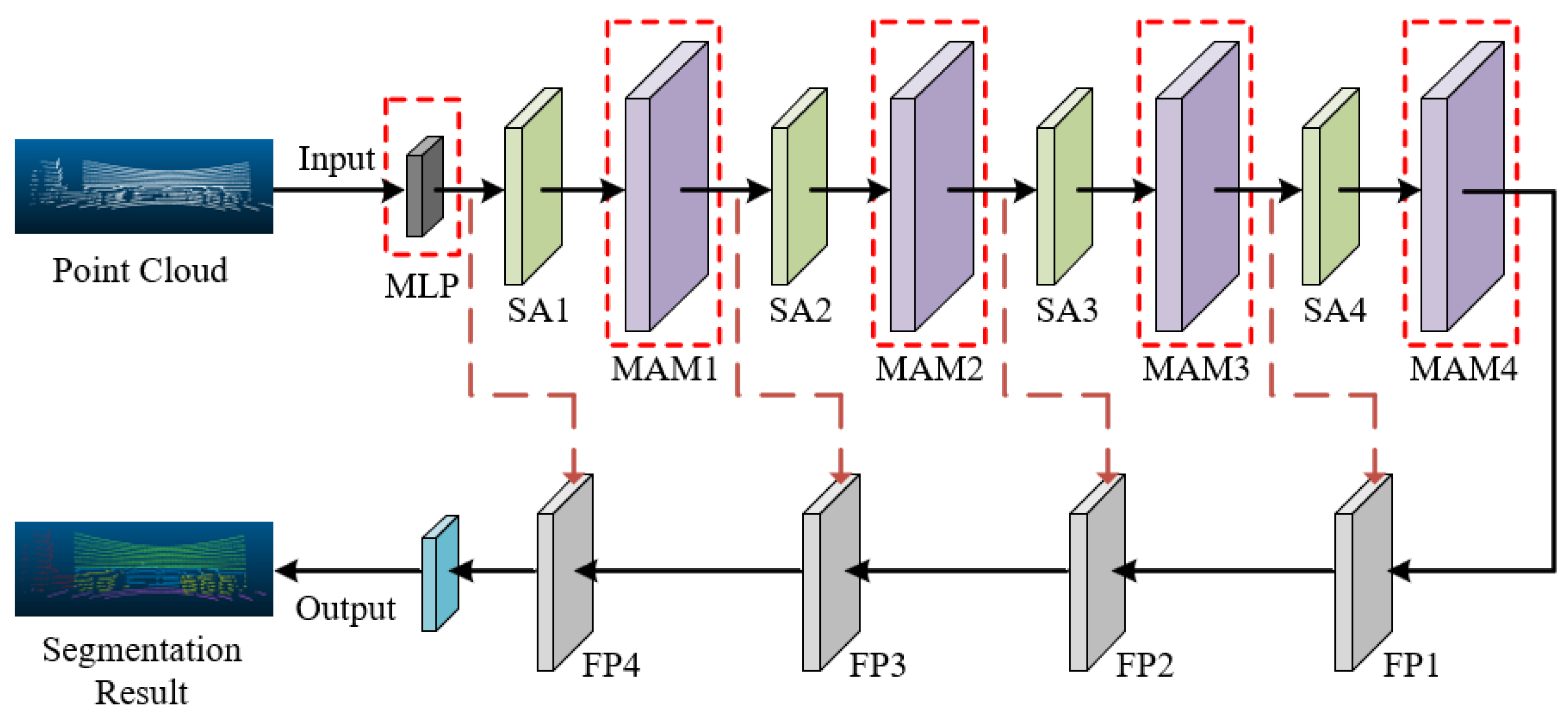

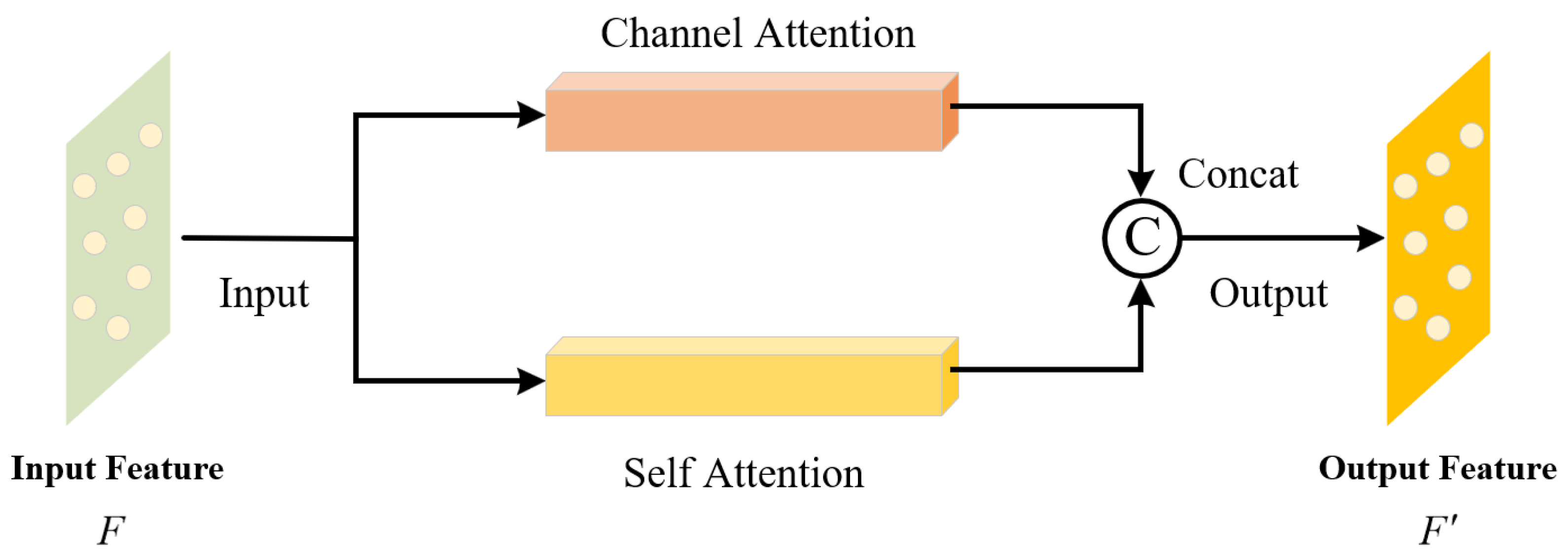

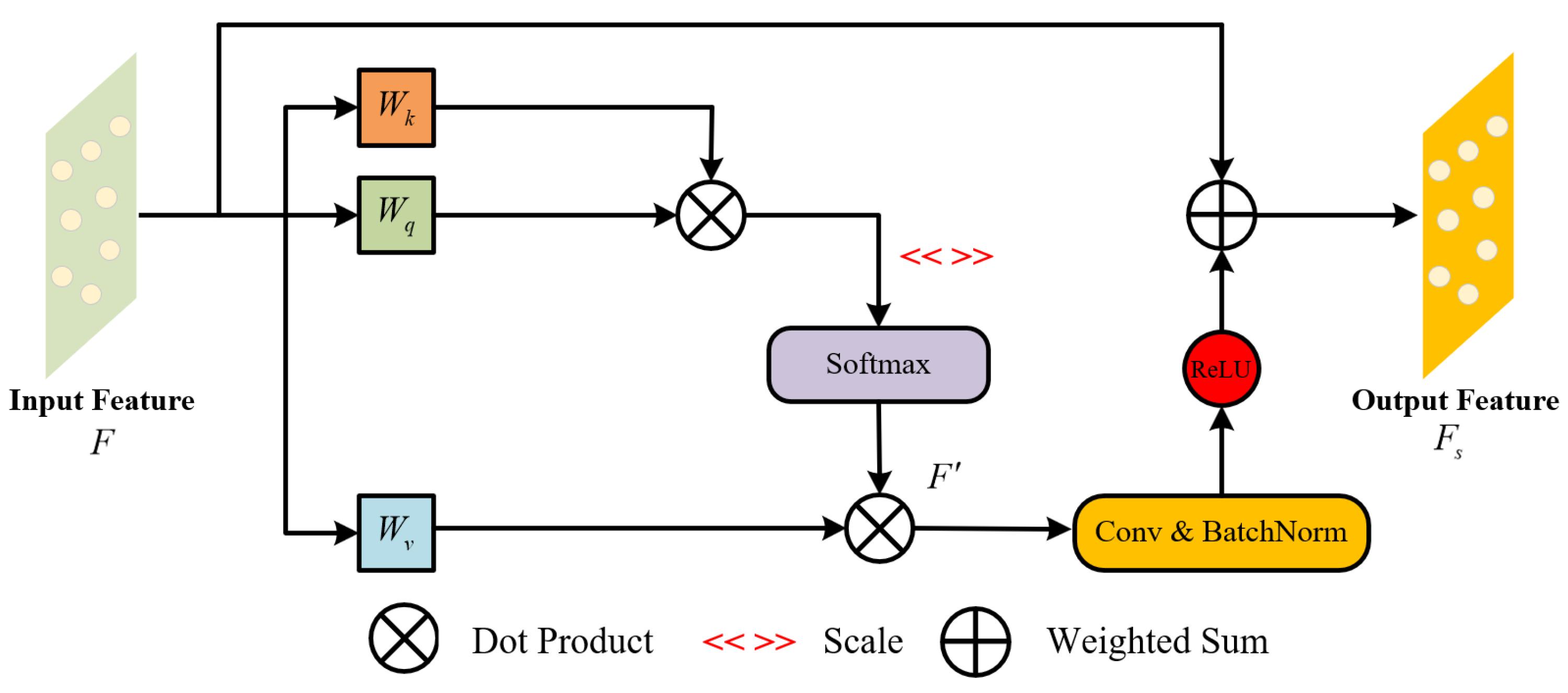
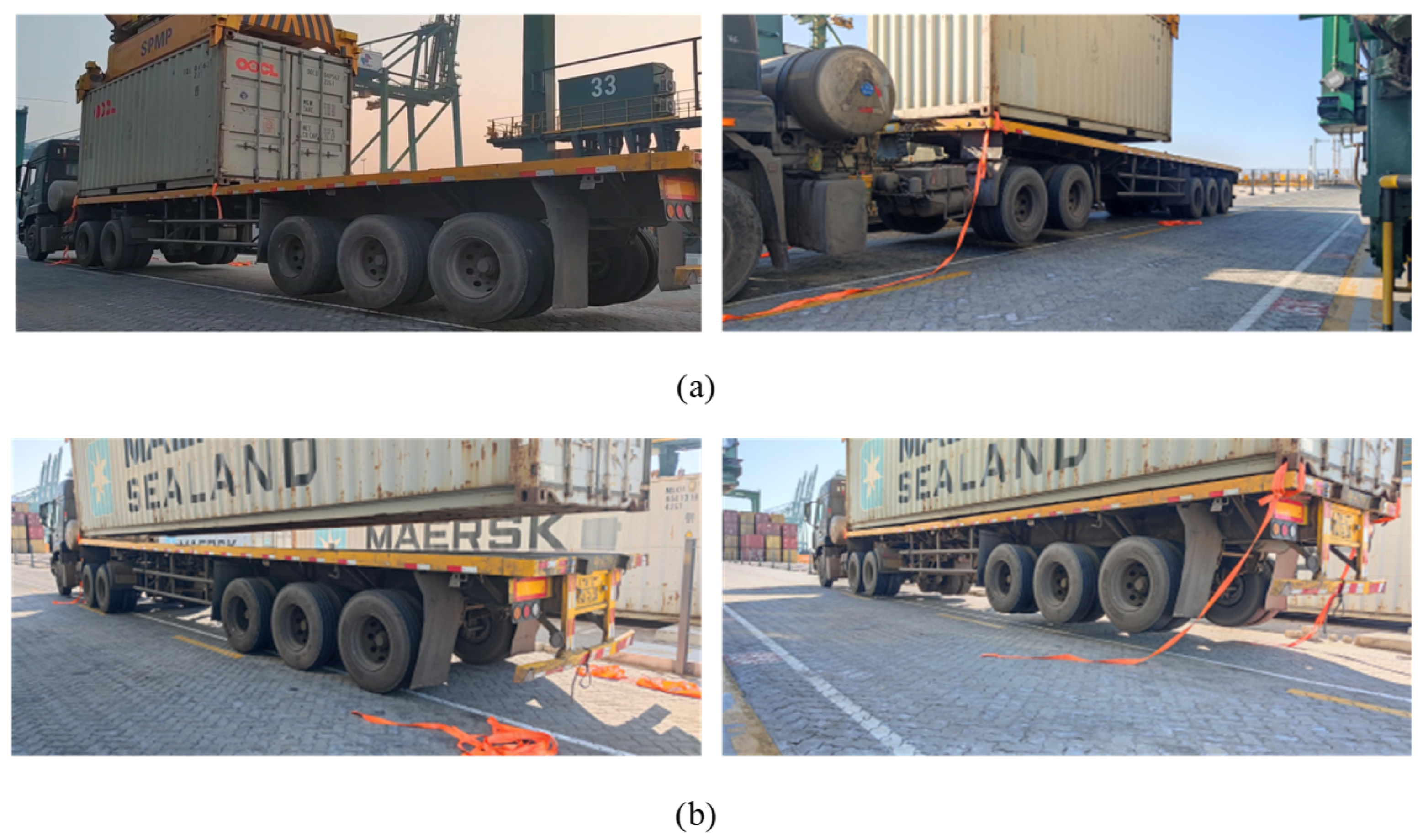
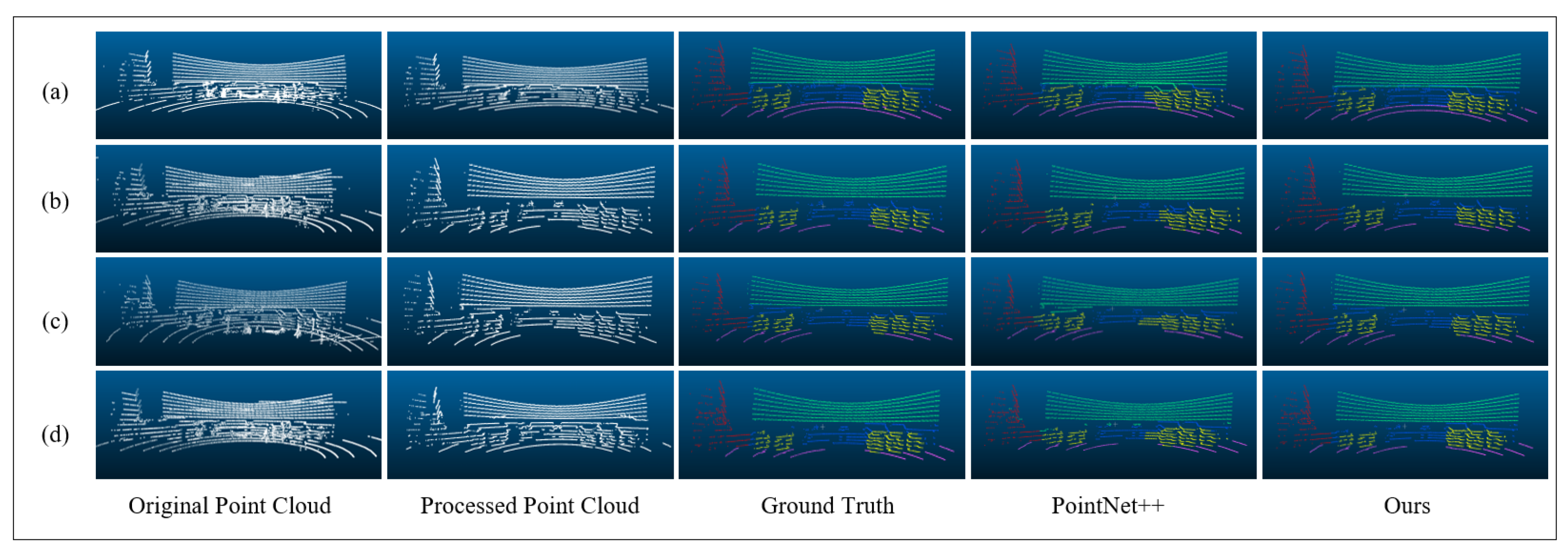
| Parameter | Value |
|---|---|
| Horizontal Scan Resolution | 0.2° |
| Vertical Scan FOV | −16°~14° |
| Vertical Scan Resolution | 2° |
| Scan Frequency | 10 Hz |
| Hardware/Software | Configuration Parameters |
|---|---|
| CPU | Intel Xeon Processor E5 2680 v4 |
| GPU | NVIDIA GeForce RTX 3090 |
| Memory | 64 GB |
| Operating System | Ubuntu 20.04 |
| Deep Learning Framework | Pytorch 1.8 |
| Model | OA (%) | mAcc (%) | mIoU (%) | Training Time (h) | Throughput (ins./s.) |
|---|---|---|---|---|---|
| PointNet | 85.4 | 73.5 | 67.9 | 13.4 | 158 |
| PointCNN | 87.6 | 79.1 | 74.1 | 19.6 | 143 |
| Point Transformer | 90.3 | 81.2 | 76.2 | 26.3 | 71 |
| PointNet++ | 88.7 | 79.6 | 74.5 | 17.9 | 136 |
| Ours | 91.4 | 82.3 | 77.4 | 22.7 | 119 |
| Model/Combination | MLP | CAM | SAM | OA (%) | mAcc (%) | mIoU (%) |
|---|---|---|---|---|---|---|
| PointNet++ | × | × | × | 88.7 | 79.6 | 74.5 |
| + MLP | ✓ | × | × | 89.2 | 80.1 | 75.0 |
| + CAM | × | ✓ | × | 89.5 | 80.5 | 75.4 |
| + SAM | × | × | ✓ | 90.1 | 81.0 | 76.9 |
| + MLP + CAM + SAM (Ours) | ✓ | ✓ | ✓ | 91.4 | 82.3 | 77.4 |
| Condition | PointNet++ | Ours | ||||||
|---|---|---|---|---|---|---|---|---|
| Acc (%) | FPR (%) | FNR (%) | Inf. Time (ms) | Acc (%) | FPR (%) | FNR (%) | Inf. Time (ms) | |
| Daytime | 88.6 | 13.0 | 9.0 | 105 | 97.4 | 1.7 | 4.0 | 120 |
| Nighttime | 89.2 | 12.3 | 8.6 | 106 | 97.8 | 1.5 | 3.0 | 122 |
| Light Rain | 86.8 | 13.7 | 12.5 | 112 | 96.1 | 2.6 | 5.5 | 125 |
| Heavy Rain | 82.8 | 17.5 | 18.5 | 116 | 93.0 | 4.7 | 10.5 | 130 |
| Foggy | 83.2 | 16.0 | 18.0 | 113 | 94.5 | 4.4 | 7.0 | 128 |
Disclaimer/Publisher’s Note: The statements, opinions and data contained in all publications are solely those of the individual author(s) and contributor(s) and not of MDPI and/or the editor(s). MDPI and/or the editor(s) disclaim responsibility for any injury to people or property resulting from any ideas, methods, instructions or products referred to in the content. |
© 2025 by the authors. Licensee MDPI, Basel, Switzerland. This article is an open access article distributed under the terms and conditions of the Creative Commons Attribution (CC BY) license (https://creativecommons.org/licenses/by/4.0/).
Share and Cite
Shen, Y.; Man, X.; Wang, J.; Zhang, Y.; Mi, C. Truck Lifting Accident Detection Method Based on Improved PointNet++ for Container Terminals. J. Mar. Sci. Eng. 2025, 13, 256. https://doi.org/10.3390/jmse13020256
Shen Y, Man X, Wang J, Zhang Y, Mi C. Truck Lifting Accident Detection Method Based on Improved PointNet++ for Container Terminals. Journal of Marine Science and Engineering. 2025; 13(2):256. https://doi.org/10.3390/jmse13020256
Chicago/Turabian StyleShen, Yang, Xintai Man, Jiaqi Wang, Yujie Zhang, and Chao Mi. 2025. "Truck Lifting Accident Detection Method Based on Improved PointNet++ for Container Terminals" Journal of Marine Science and Engineering 13, no. 2: 256. https://doi.org/10.3390/jmse13020256
APA StyleShen, Y., Man, X., Wang, J., Zhang, Y., & Mi, C. (2025). Truck Lifting Accident Detection Method Based on Improved PointNet++ for Container Terminals. Journal of Marine Science and Engineering, 13(2), 256. https://doi.org/10.3390/jmse13020256






